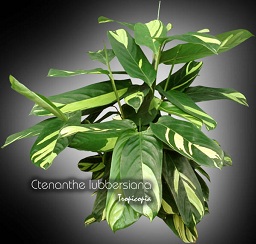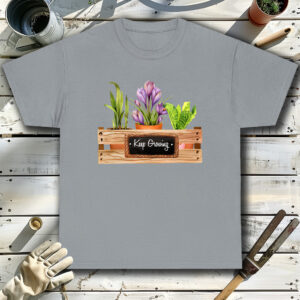Table of contents
Phrynium

Latin Name: Ctenanthe lubbersiana
Category: Foliage plant
Family: Marantaceae
Origin: Brazil
Climate: Tropical
Growing Zones: 11-10
Care Instructions
The Phrynium (Ctenanthe lubbersiana) is a tropical plant that originates from Brazil. This foliage plant plant belongs to the Marantaceae family and is well-suited for growing in USDA zones 11-10.
Complete Care Guide for Phrynium (Ctenanthe lubbersiana)
Watering Requirements
The Phrynium, commonly known as Ctenanthe lubbersiana, thrives in consistently moist soil, making proper watering essential for its health. It is important to water the plant regularly, ensuring that the top inch of soil remains damp but not soggy. Overwatering can lead to root rot, so it’s crucial to allow the soil to dry slightly between waterings. During the growing season, typically spring and summer, you may need to water more frequently, while in the fall and winter, reduce the frequency as the plant enters a dormant phase. Always use room temperature water to avoid shocking the roots, and consider using distilled or rainwater to prevent mineral buildup from tap water.
Light Conditions
Ctenanthe lubbersiana prefers bright, indirect light to thrive. Direct sunlight can scorch its delicate leaves, leading to unsightly brown patches. Ideally, place your Phrynium near a window with filtered light or in a well-lit room where it can receive plenty of indirect sunlight. If the leaves start to lose their vibrant colors or become leggy, it may be a sign that the plant is not receiving enough light. Conversely, if you notice leaf burn or fading colors, consider moving it to a shadier spot. Maintaining the right light conditions is crucial for promoting healthy growth and vibrant foliage.
Soil Preferences
The ideal soil for Ctenanthe lubbersiana is a well-draining potting mix that retains moisture without becoming waterlogged. A blend of peat moss, perlite, and orchid bark works well to provide the necessary aeration and drainage. This plant benefits from a slightly acidic to neutral pH, ideally between 6.0 and 7.0. To promote healthy growth, consider fertilizing your Phrynium every 4-6 weeks during the growing season with a balanced, water-soluble fertilizer diluted to half strength. In the fall and winter, reduce or stop fertilization as the plant’s growth slows down. Regularly checking the soil’s moisture level will help you determine when to water and fertilize.
Pests and Diseases
Ctenanthe lubbersiana is generally resilient but can be susceptible to common houseplant pests such as spider mites, aphids, and mealybugs. Regularly inspect the undersides of leaves and the stems for any signs of infestation. If you notice pests, treat them promptly with insecticidal soap or neem oil, ensuring to cover all affected areas. Additionally, the plant can suffer from fungal diseases if overwatered or if humidity levels are too high. To prevent these issues, ensure good air circulation around the plant and avoid wetting the leaves when watering. If you encounter leaf spots or wilting, it may indicate a fungal infection, which can often be treated with a fungicide.
Special Care Tips
To keep your Ctenanthe lubbersiana healthy and thriving, consider the following special care tips. First, maintain a humid environment, as this plant loves humidity. You can achieve this by misting the leaves regularly, placing a humidifier nearby, or setting the pot on a tray filled with pebbles and water. Additionally, rotate the plant every few weeks to ensure even growth and prevent it from leaning towards the light source. Pruning any yellow or damaged leaves will not only improve the plant’s appearance but also promote new growth. Lastly, be mindful of temperature fluctuations; Ctenanthe lubbersiana prefers temperatures between 65°F and 80°F (18°C to 27°C) and should be protected from cold drafts and sudden temperature changes.








